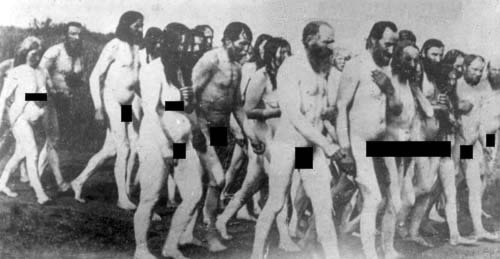Jim Cameron
Late in the evening of March 20, 1964, a power failure plunged the entire city of Cranbrook into total darkness. The problem was a failed power circuit caused by a rogue blizzard and the power was back on within an hour but, in that brief hour of shadow, emotions ran high and the words “Sons of Freedom” echoed angrily throughout the city.
Two weeks earlier a massive power failure shut down the entire Cominco mining operations of Kimberley but, in this case, it wasn’t because of the weather. It was a blatant act of terrorism, the careful placement of explosives at the base of a 300-foot (90-metre) high West Kootenay Power Company electrical tower on the shore of Kootenay Lake. The explosion toppled the structure and instantly the Sullivan mine and the fertilizer and iron plants of Kimberley were relieved of 170,000 volts of power.
It was a devastating blow to a community whose entire livelihood depended on mine production. It was obvious that it would take weeks to repair the damage and up to 800 workers suddenly found themselves unemployed.
Although neither Cranbrook nor Kimberley were directly affected by the blast, domestic power being supplied to both cities by the East Kootenay Power Company. There were power fluctuations for some time following as the local company attempted to assist the mine and other local industry as much as possible. Residents in both communities were requested to conserve electricity in order to aid the effort.
Kimberley Mayor Cliff Swan declared that “the incident has very seriously affected our entire economy.”
Not just Kimberley, in fact, but most Kootenay towns felt the loss one way or another. Trail sent a wire to Prime Minister Diefenbaker urging immediate steps be taken to prevent further such acts. It was a sentiment echoed by a vast majority in the Kootenays where there was talk of vigilante retribution. Panicked reports of gunshots near Kimberley in the days following proved to be nothing more than army militia conducting a special survival training exercise and firing blank shells.
Cominco gradually settled into a pattern which integrated concentrator, fertilizer and iron workers to supply at least half-time work for employees. West Kootenay Power Company employees worked long and hard to restore operations and by early April, three weeks ahead of schedule and 27 days after the shutdown, things gradually returned to normal.
The Doukhobors, a Russian social/religious movement claiming strict observance of the Holy Bible and unhappy with life in their homeland, emigrated westward in the late 1800s, welcomed to the Canadian prairies by a government keen on settlement. But neither the prairie climate nor Canadian laws particularly appealed to the communal settlers. Peter “Lordly” Verigin, the acknowledged leader, began buying large tracts of property near Grand Forks and Castlegar in the early 1900s and approximately 8,000 Doukhobors took up communal farming in the West Kootenay.
While generally pacifist and self-sustaining, a small faction known as the “Sons of Freedom” or “Freedomites” were (predictably) no happier with B.C. government policies and regulations regarding everything from land-ownership to public schooling and, by the early 1920s, began to display their displeasure with acts of violence, most notably burnings, bombings and nude demonstrations. In fact, in 1932 the Canadian government passed a law criminalizing public nudity largely aimed at the Sons of Freedom.
Over the next four decades there were over 1,000 criminal acts attributed to Freedomites: bombings of public schools, railroad lines, bridges, power stations, electrical lines, even the Nelson courthouse.
The Doukhobors gradually splintered among themselves: those willing to assimilate into Canadian culture, those continuing to rebel and those somewhere in between. For many residents of British Columbia, fed up and frightened with the many years of demonstrations, it was a time of “any Russian is a bad Russian,” especially with the 1950s growing distaste of communism — of which the Doukhobors exemplified — and the onset of the Cold War.
Peter Verigin, himself, was the victim of a bomb set in a rail coach in which he was riding between Grand Forks and Castlegar on Oct. 29, 1924. He, his 17-year-old female companion and seven innocent travellers including Grand Forks MLA John McKie were blown into the hereafter in a crime that has never been solved.
His son Peter “The Purger” Verigin took over the reins a few years later and gradually smoothed relations between the more reasonable Doukhobors and the government, which further angered the Freedomites, leading to increased demonstrations and violence.
Local newspapers featured numerous editorials over the years decrying the beliefs of the radicals, often linking all Russian immigrants into a single undesirable group.
The bombing of the electrical tower in 1962 proved to be the beginning of the end of the Sons of Freedom. Within a short time police arrested over 50 leaders, 36 of whom were later convicted of arson or conspiracy to commit arson and sentenced to 12 years in Agassiz prison, where a special fire-proof metal wing (including cement furniture and fire-proofed bedding) was constructed to hold the criminals.
Cranbrook itself was never directly affected by the many years of terrorist activities, at least so far as is known. A 1908 Fernie newspaper editorial, in response to a group of Freedomites parading the streets of Fort William clad only in “holiness”, suggested that if it happened in Cranbrook the local Herald newspaper would turn it into a boost for the local weather, which may well have been the case.
There are at present an estimated 20-40,000 Canadians of Doukhobor descent, with only a small percentage practicing the religion of their forefathers. The Sons of Freedom have not been heard from for many years.
